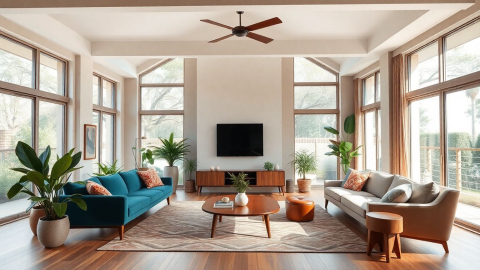Rustic Chic: The Hilarious Trend of Pretending Your Home is a Barn

In a shocking turn of events, interior designers across the globe have collectively decided that the pinnacle of sophistication is making your home look like it was cobbled together from the remnants of a 19th-century farmhouse. That's right, folks - rustic interior design is all the rage, and it's time to embrace your inner cowboy, even if the closest you've ever been to a farm is the produce section at Whole Foods.
According to Samuel Pye, creative manager at interior design and architecture studio Echlin, "To me, the beauty of rust tones is the concept of rust itself, and how it marries both nature and the man-made through the corrosion of metals through its exposure to air and moisture." Because nothing says 'home sweet home' quite like the slow decay of metal, am I right?
Embracing Your Inner Barn: The Rustic Revolution
Gone are the days when a clean, modern aesthetic was the goal. Now, it's all about making your living room look like it could double as a stable at a moment's notice. The key elements of this trend? Wood, wood, and more wood. Preferably reclaimed, because nothing says 'chic' quite like furniture made from old barn doors.
But don't stop there! To truly embrace the rustic lifestyle, you'll need to incorporate natural textiles like linen, cotton, and wool. Because nothing says 'I'm one with nature' quite like wrapping yourself in a scratchy wool blanket while sitting on your reclaimed wood sofa, pretending you're a pioneer braving the harsh wilderness of your air-conditioned living room.
And let's not forget about color. According to the experts, earthy tones are the way to go. Think terracotta, sienna, and moss green. Because apparently, the height of interior design is making your home look like it's been slowly consumed by mold and rust. Chic!
The Art of Curated Clutter: Vintage Items and Antiques
Now, you might think that achieving this rustic look is as simple as not cleaning your house for a few months. But oh, how wrong you'd be! To truly master the art of rustic interior design, you need to carefully curate your clutter. This means scouring antique shops, flea markets, and your great-aunt Mildred's attic for the perfect vintage items to scatter artfully around your home.
According to Lisa Staton, a Bellingham-based designer, "In the living room, every item shown is either vintage, handmade or small batch handcrafted." Because nothing says 'I'm unique and interesting' quite like filling your home with other people's old junk, right?
But don't just stop at furniture. Oh no. To truly embrace the rustic aesthetic, you need to go all out. Think old doors repurposed as coffee tables, vintage suitcases stacked to create a nightstand, and maybe even an old ladder propped against the wall for... well, who knows why, but it looks rustic, and that's what counts!
The Great Outdoors, Indoors: Bringing Nature Home
Now, you might be thinking, "But I live in a city apartment. How can I possibly achieve this rustic look?" Fear not, urban dweller! The key is to bring the outdoors in. And no, we don't mean letting pigeons nest in your living room (although that would certainly add to the rustic charm).
Start by incorporating plenty of plants into your decor. The more, the merrier! Don't worry if you don't have a green thumb - dead plants are even more rustic than live ones. And if you really want to commit to the look, why not add some stone or brick elements to your walls? Nothing says 'I live in a converted barn' quite like exposed brick in a 10th-floor apartment.
But why stop there? To truly blur the lines between indoors and outdoors, consider removing your roof. After all, what's more rustic than being able to see the stars from your bed? Just think of the money you'll save on air conditioning!
Lighting: Because Candles are Safer than Electricity, Right?
When it comes to lighting in rustic interior design, the rule of thumb is: the dimmer, the better. After all, nothing ruins the illusion of living in a 19th-century farmhouse quite like being able to see clearly.
Forget about those modern, energy-efficient LED bulbs. What you need are warm-toned lighting fixtures like candles, lanterns, or pendant lights made from natural materials like wood or metal. Because nothing says 'I'm environmentally conscious' quite like using inefficient lighting sources that pose a fire hazard, right?
And if you really want to commit to the rustic lifestyle, why not forgo electricity altogether? Just think of the stories you'll be able to tell at dinner parties: "Oh, this old place? We just use candles and oil lamps. It's so quaint and authentic. We've only had three small fires this month!"
The Final Touch: Rust, Because Nothing Says 'Chic' Like Corrosion
If you really want to take your rustic interior to the next level, it's time to embrace rust. Yes, you heard that right. Rust is no longer just a sign of neglect and decay - it's a design feature!
According to Tecla Tangora, co-founder and principal designer at Labscape Architecture and Design, rust red combines "The strength of red, the stability of brown, and the energy of orange." Because nothing says 'stable and energetic' quite like the color of corroding metal, right?
So go ahead, let your metal fixtures rust. Better yet, why not paint your walls in a lovely shade of rust? Benjamin Moore even has a paint color specifically designed to capture the perfect rust shade. Because who needs boring old white walls when you can have walls that look like they're slowly disintegrating?
In conclusion, rustic interior design is all about embracing the old, the worn, and the weathered. It's about pretending you live in a barn, even if you're in a high-rise apartment. It's about spending thousands of dollars to make your home look like it's falling apart. But most importantly, it's about convincing yourself that rust, decay, and inefficiency are the height of sophistication. So go forth, urban cowboys and cowgirls, and let your inner farmhand shine!
References
More Articles
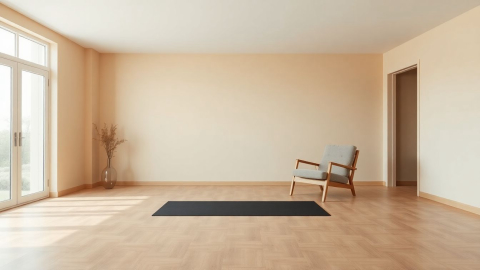
The Laughable Illusion of Minimalist Interior Design: A Satirical Take
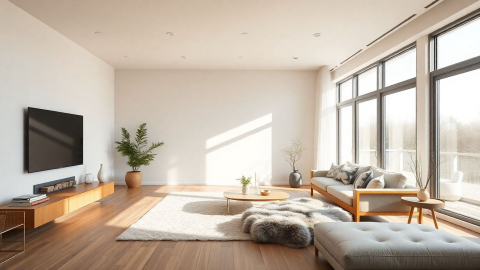
The Bleached Bones of Design: A Satirical Look at Scandinavian Interiors
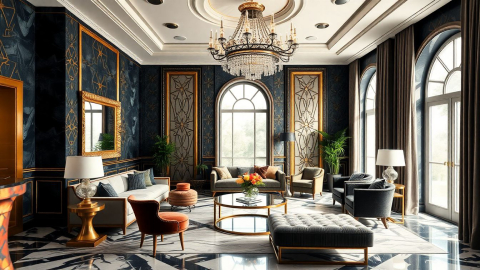
Art Deco Interior Design: A Satirical Guide to Timeless Opulence
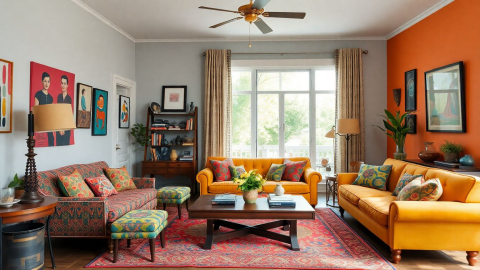
Embracing Eclectic Interior Design: A Journey of Personal Expression
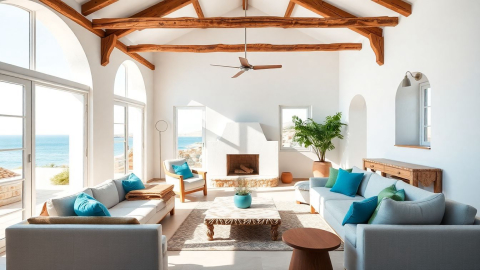
The Art of Mediterranean Interior Design: Blending Tradition with Modern Aesthetics
